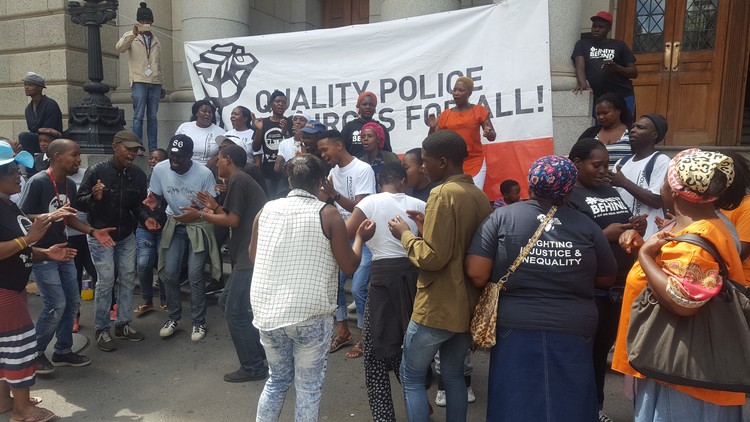Police resources: there’s nothing wrong with the allocation system, SAPS tells court
Lawyer says expert evidence is flawed
There is nothing wrong with the way police resources are allocated, a lawyer for the South African Police Service (SAPS) told the Western Cape High Court on Wednesday.
Advocate Renata Williams was representing SAPS in the application brought by the Social Justice Coalition, Equal Education and the Nyanga Community Policing Forum, asking the court to declare that the allocation of police resources discriminates against black people and the poor.
Williams said this had not been established by the applicants and the case should be dismissed without costs.
The court case resumed on Monday, after it was postponed last December.
Williams said it was not true that there were more police officers in affluent areas than in less affluent areas. She took issue with the evidence put forward by Jean Redpath, researcher at the University of the Western Cape’s Dullah Omar Institute, on policing and the Theoretical Human Resource Requirements (THRR).
The THRR is a complex and secret system, which establishes how police and staff are allocated.
Williams said that all crimes were important and police had a mandate to police all crime. “While murder is important, it is not the only crime. Ms Redpath cannot use murder as a predictor or indicator of violent crime. Redpath’s model is fundamentally flawed. Redpath is no expert, she probably just studied some case studies”.
She said Redpath’s affidavit was filled with “useless annexures”.
Judge MJ Dolamo asked Williams what was the best predictor of crime according to SAPS. She replied that crime could not be predicted only by population size and crime rate.
Williams said there had been changes to police allocations, including in Khayelitsha, Nyanga and Athlone. She said 22 extra police officers had been sent to Athlone because of the high crime rate; 41 to Khayelitsha, 47 to Harare police station and 41 to Nyanga.
“Is there any information or document that you can show me that shows if the additional police have helped in any way or have not helped?” asked Dolamo. Williams did not provide the information.
On whether the allocation of police resources discriminated against poor communities, Williams said, “Racially driven allocation is what the applicants want to see. That is a disregard of the Equality Act. It would be going backwards, and not forwards.”
She said the THRR only stipulated how many officers should be allocated to each province, and the decision about the distribution of officers within a province was taken by “the police commissioner of that specific province” in accordance with the SAPS Act. She said the applicants were challenging the wrong part of the process.
In response, the advocate for the applicants, Peter Hathorn, said they were arguing against the national system of police resources allocation. When they submitted their court papers, he said, the applicants only had information from KwaZulu-Natal and Western Cape to show discrimination. He said he would give details on Thursday.
The case continues today.
Support independent journalism
Donate using Payfast

Don't miss out on the latest news
We respect your privacy, and promise we won't spam you.
Next: Addo residents sick of sewage spills
Previous: Developers accused of “capturing” Sea Point ratepayers association
© 2018 GroundUp. 
This article is licensed under a Creative Commons Attribution-NoDerivatives 4.0 International License.
You may republish this article, so long as you credit the authors and GroundUp, and do not change the text. Please include a link back to the original article.

